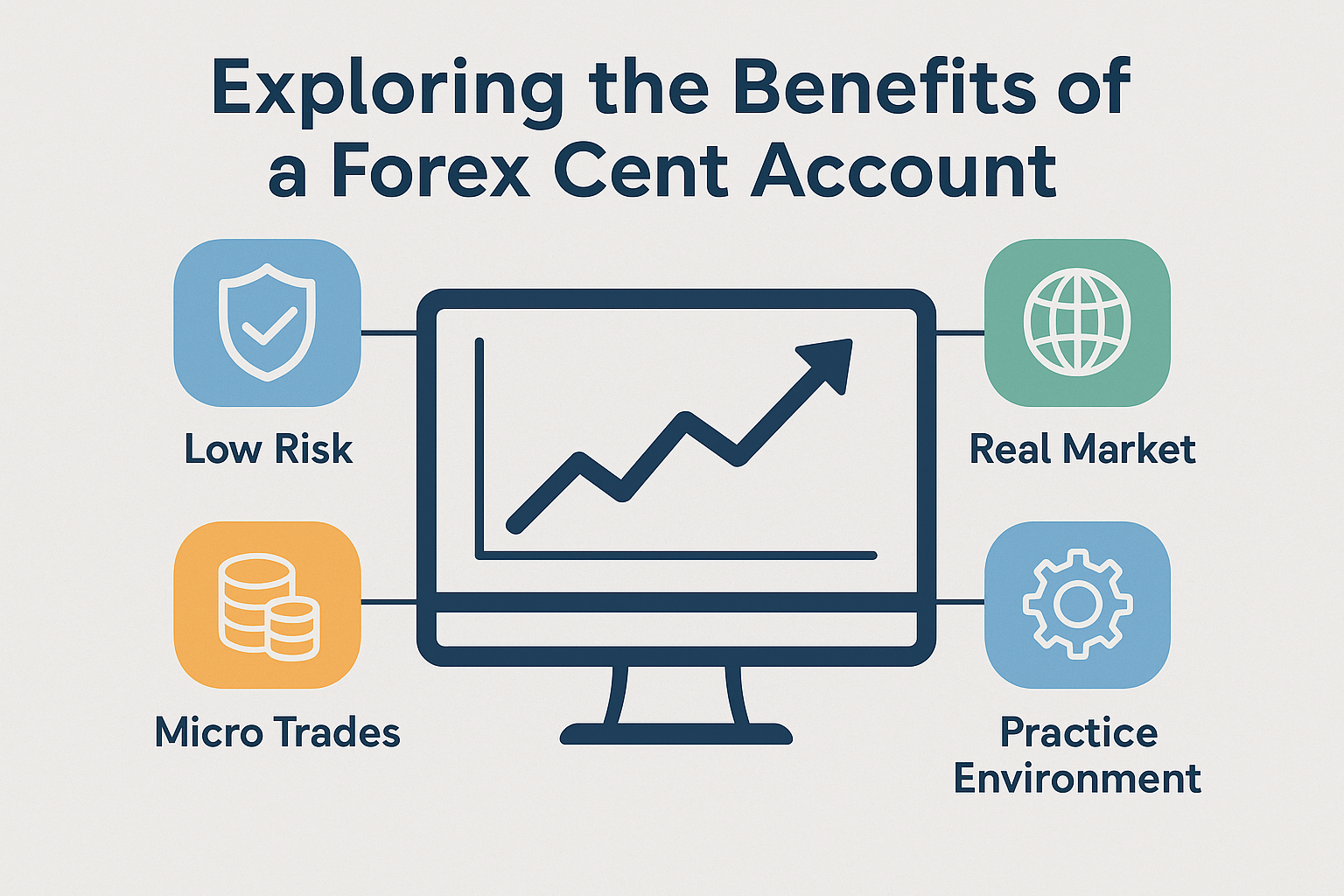
What Is a Forex Cent Account?
A Forex Cent Account is a type of trading account where balances and transactions are measured in cents instead of dollars. This allows traders to operate with very small capital, as 1 USD is displayed as 100 cents. Although it functions similarly to a standard trading account, the key difference lies in the scale of risk and required capital, making it ideal for beginner traders and those testing strategies.
Key Features of a Forex Cent Account
Forex cent accounts provide a unique trading experience, particularly for those looking to gain market exposure without high financial stakes. Key features include:
- Cent-based balance: Account funds are shown in cents, providing a psychological edge by inflating the balance visually.
- Low minimum deposit: Some brokers allow opening accounts with as little as $1.
- Real-market conditions: Trades are executed in live market environments, unlike demo accounts.
- Micro lot trading: Enables position sizing as low as 0.01 lots or even smaller.
These features support practical learning, risk control, and flexible capital management.
Forex Cent Account vs Standard and Micro Accounts
| Feature | Cent Account | Micro Account | Standard Account |
| Base Currency | Cents (e.g., 1 USD = 100) | USD | USD |
| Minimum Deposit | Very low (from $1) | Low (from $50–100) | Higher (from $500+) |
| Lot Size | 0.0001–0.01 lots | 0.01 lots | 1 lot |
| Target User | Beginners, testers | Intermediate traders | Experienced traders |
| Risk Exposure | Extremely low | Moderate | High |
Advantages of a Forex Cent Account
- Minimal risk exposure while learning to trade in live conditions
- Real-time market testing for strategies without significant capital
- Flexible lot sizing for granular control over trade sizes
- Psychological preparation for transitioning to larger accounts
- Access to all trading instruments available on standard platforms
Disadvantages of a Forex Cent Account
- Limited profit potential due to small trade volumes
- Slower growth curve in terms of capital gains
- Some brokers may limit functionality or tools on cent accounts
- Can lead to overtrading due to perceived safety of low stakes
How a Forex Cent Account Helps Build Trading Skills
A cent account acts as a powerful learning platform. By exposing traders to real-world market conditions with minimized risk, it bridges the gap between demo and standard accounts. Users learn the mechanics of order execution, spread behavior, slippage, swap fees, and the emotional discipline required to trade consistently. It’s particularly beneficial for testing expert advisors (EAs) or manual strategies without risking significant funds.
Who Should Consider a Forex Cent Account?
This type of account is suitable for:
- Complete beginners who want to gain real trading experience
- Strategy testers looking to validate systems under live market pressure
- Risk-averse traders interested in gradual capital growth
- Traders transitioning from demo to real accounts
Forex cent accounts are also ideal for teaching environments or family-and-friends trading projects due to their risk-controlled nature.
How Profits and Losses Are Calculated in Cent Accounts
While cent accounts show balances in cents, the mechanics of profit and loss calculation mirror standard accounts. The only difference is scale:
- Example: A 10-pip gain on a 0.01 lot trade may result in a $0.10 profit, shown as 10 cents.
- Leverage, margin, spread, and swaps are applied proportionally, and the results are reflected in cent values.
It’s crucial to remember that although the numbers may appear larger due to the cent denomination, the actual value remains small.
How to Open a Forex Cent Account: Step-by-Step Guide
Choosing a Reliable Broker
Select a broker with a strong reputation, proper regulation, and a track record of offering transparent, cent-based trading conditions. Consider spreads, available platforms, and customer service quality.
Registering and Verifying Your Account
Complete the broker’s registration form, providing accurate personal information. Submit identification documents (ID, proof of address) to comply with KYC/AML requirements.
Making Your First Deposit
Most brokers allow deposits from $1–$10 for cent accounts. Use a trusted payment method and ensure the account is funded correctly in cents.
Placing Your First Trade
After depositing, open the trading platform, select a currency pair, and choose a micro or nano lot size. Set stop-loss and take-profit levels to manage risk effectively.
Best Practices and Tips for Cent Account Traders
Start Small, Scale Gradually
Begin with the minimum deposit and focus on learning. Increase capital only after consistent performance.
Stick to a Trading Plan
Treat the cent account like a standard account. Use a well-defined strategy, set goals, and manage your risk consistently.
Monitor Performance and Learn Continuously
Use trade journals or analytics tools to track your progress. Identify mistakes, refine strategies, and maintain emotional discipline.
Conclusion: Why a Forex Cent Account is a Smart Choice for Beginners
A forex cent account is more than just a beginner’s tool—it’s a gateway to serious trading with controlled risk. It enables practical skill development, builds confidence, and offers a safe environment for experimentation. While it’s not designed for large-scale profit, it lays the foundation for long-term trading success.
FAQ – Common Questions About Forex Cent Accounts
Q: Is a forex cent account the same as a demo account?
No. A cent account uses real money, while a demo account operates in a simulated environment.
Q: Can I withdraw profits from a cent account?
Yes, profits—although small—can be withdrawn like any standard account.
Q: Are cent accounts available on MT4/MT5?
Most brokers support cent accounts on both MT4 and MT5 platforms.
Q: What leverage is offered with cent accounts?
Leverage typically ranges from 1:100 to 1:1000, depending on the broker.
Q: How long should I trade on a cent account before upgrading?
Trade until you consistently follow your trading plan and show profitability. This varies by individual.
